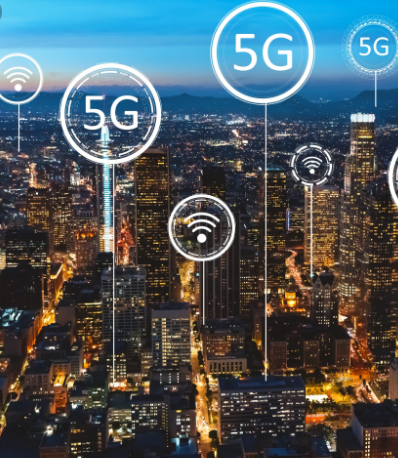
How well 5G Home Broadband solutions perform could affect telecom stocks over the next few years. This is because not all parties are convinced that 5G wireless is going to succeed, or at least be capable of competing with cable broadband services. While T-Mobile and Verizon Wireless have begun marketing and selling their 5G Home Internet plans, AT&T has no plans on pushing this service option.
Currently, there’s been a controversy amongst cellular providers and cable TV companies over telecom stocks. It’s even possible that 5G services could compete with local phone companies in areas that are still served by copper line-based DSL services.
“Verizon and T-Mobile think the service can be a growth driver and will have attractive economics,” UBS analyst John Hodulik told Investor’s Business Daily. “FWA (fixed wireless access) is likely to do better where there are limited options for broadband and among subscribers used to lower speeds, so that means legacy DSL subscribers and slower speed cable.”
He added, “The big question is whether FWA has staying power over the next 5 to 10 years given necessary speed increases.”
Is 5G Wireless Worth the Cost?
AT&T has opted not to get into the fixed wireless game at this time. Their reason is simply that it lacks potential. In comparison, due to data usage surges over time, FWA can become less economic than fiber-optic landline alternatives.
“I think it stems from a genuinely different view of the engineering and capacity constraints,” MoffettNathanson analyst Craig Moffett told IBD. “The divergence in views about fixed wireless access between AT&T and Verizon or T-Mobile speaks to a genuine controversy in the telecom industry.”
He also stated that telecom companies are scrambling to make money from huge investments in 5G radio spectrum.
“The renewed appetite for FWA may be a sign of a dawning realization that the gee-whizzy use cases of 5G may never materialize,” Moffett said. “That could be forcing operators to revisit every possible source of incremental revenue in a bid to earn at least some return on their huge investments in 5G spectrum.”
The Broadband Competition
If you’re fortunate enough, there are cable TV options with high speed Internet options. For those who are not, and don’t want to try relying on satellite, there’s cellular and FWA.
Comcast, one of the largest cable TV companies, says it’s not concerned with broadband competition from fixed 5G wireless services.
“Time will tell, but it’s an inferior product,” Comcast Chief Executive Brian Roberts said at a recent Morgan Stanley conference. “And today, we can say we don’t feel much impact from (it). It’s lower speeds. And in the long run, I don’t know how viable the technology holds up.”
To put it into perspective, Eighty-seven percent of U.S. households subscribe to an internet service at home, according to Leichtman Research Group. Cable TV firms comprise 70% of the broadband market, per LRG.
At the end of 2021 Verizon had about 223,000 fixed wireless broadband customers, though most were connected via 4G wireless networks. On the other hand, T-Mobile had 646,000 fixed broadband subscribers, all connected to 5G.
Per Wall Street analysts, T-Mobile is expecting to serve a range of 7 million to 8 million fixed 5G wireless subscribers by 2025. Verizon has estimated 3 million to 4 million subscribers over the same period.
AT&T and Fixed 5G Wireless
Another area of fixed 5G has been debated over and that is whether it could be more successful in suburban/urban markets or in rural areas.
“FWA is definitely a threat to cable companies,” Peter Rysavy, head of Rysavy Research, said in an email. “Particularly with (high frequency) mmWave, 5G can compete directly with cable. Mid-band spectrum is also effective but is best suited for lower density population areas. In these deployments, even T-Mobile limits the number of fixed wireless subscribers it can support in any geographical area.”
At UBS, Hodulik says that even if positioned as a low-end service, fixed 5G broadband still has a potential market of 20 million to 30 million homes.
As much as AT&T may not want to get into FWA, they have a sizable wireline local service area in 22 states. That means it will face competition from fixed 5G broadband, just like cable TV firms.
“AT&T has a huge wireline asset base that is only 25% upgraded to fiber,” Oppenheimer analyst Tim Horan told IBD. “So they are very exposed to competition from fixed wireless.”
At an analyst day on March 11, AT&T said it plans to upgrade 50% of its local markets, about 30 million customer locations, to high-speed fiber-optic broadband service by year-end 2025.
AT&T’s CEO, John Stankey, commented on the controversy over FWA saying that they see FWA as playing a limited role for mobile small business and enterprise applications, as well as in rural areas.
“We’re not opposed to fixed wireless, and I’m sure there’s going to be segments of the market where it’s going to be acceptable and folks are going to find it to be adequate right now,” Stankey said.

